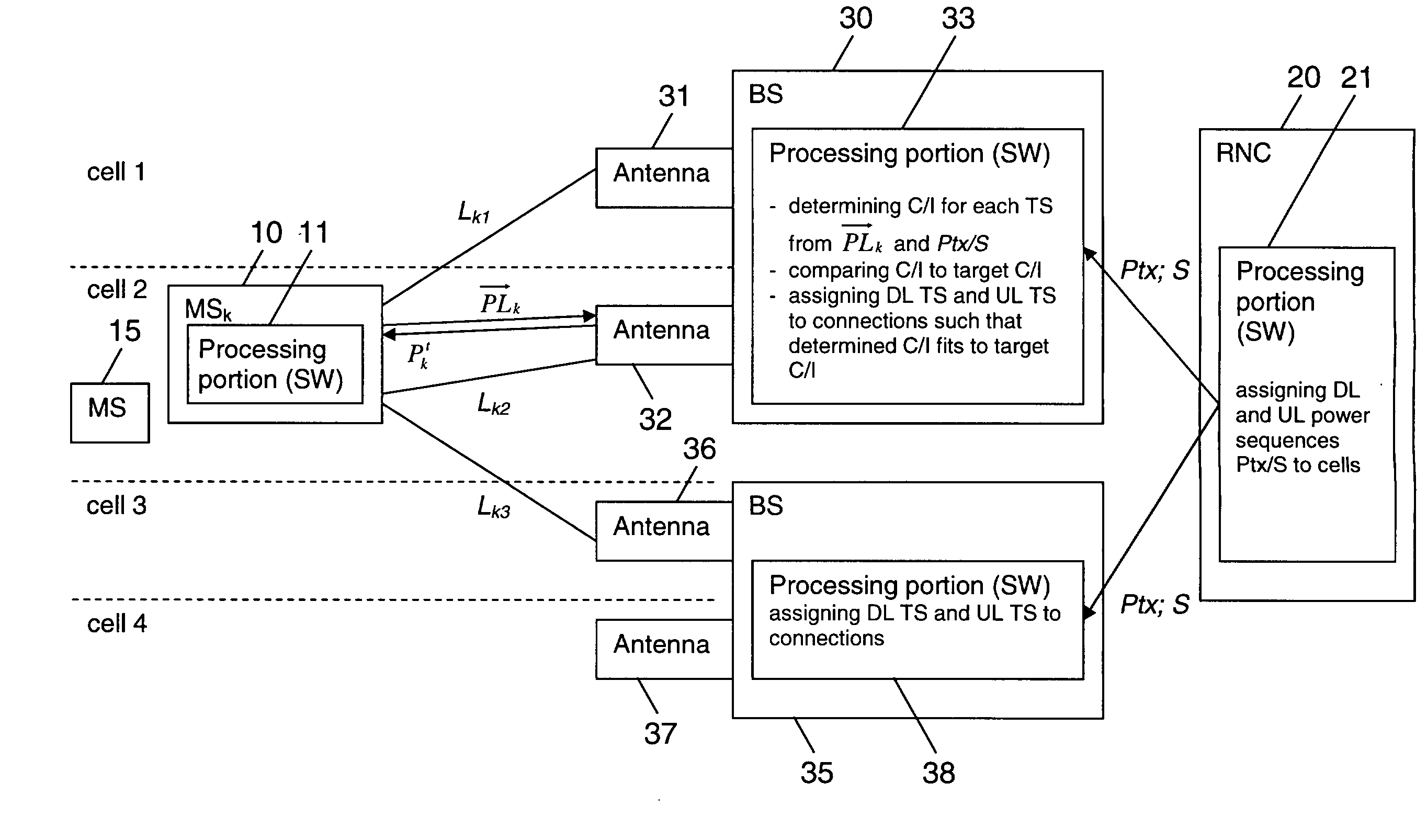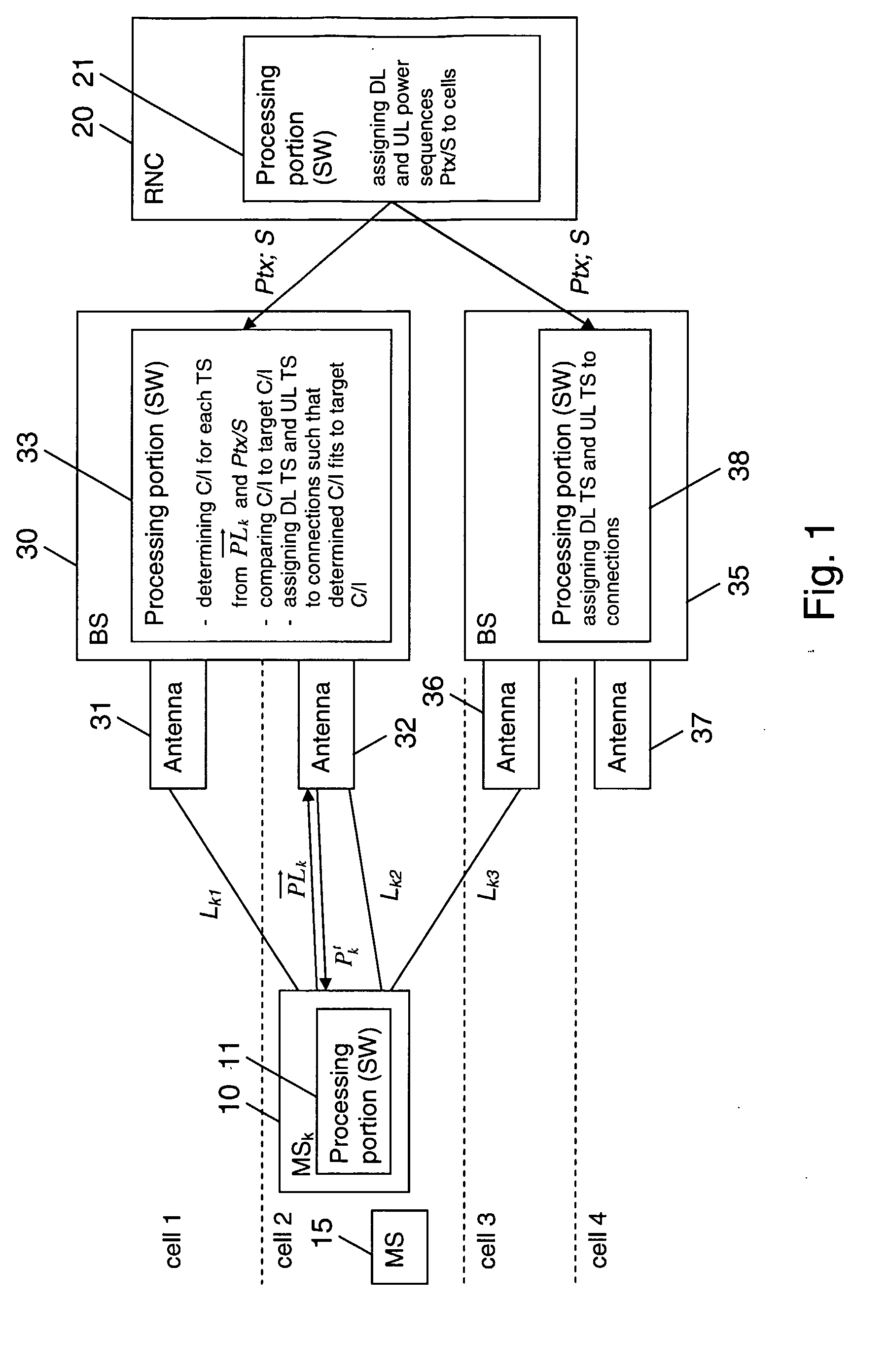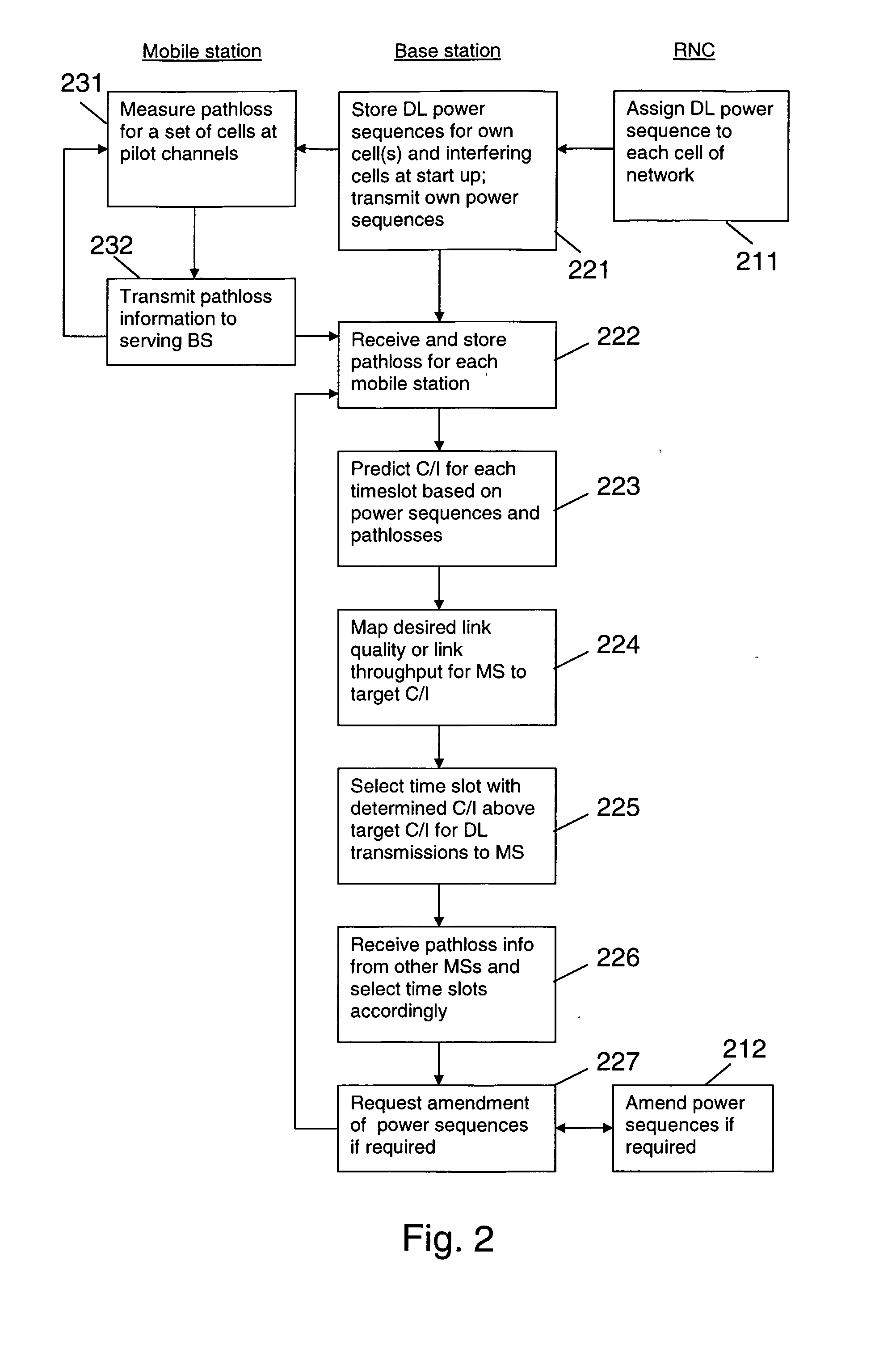Supporting an Allocation of Radio Resources
a radio resource and allocation technology, applied in the direction of power management, transmission monitoring, network traffic/resource management, etc., can solve the problems of weak inter-cell interference, inability to control the interference in a multi-cell environment, and severe inter-cell interference, so as to achieve adequate signal quality and maximize throughput
- Summary
- Abstract
- Description
- Claims
- Application Information
AI Technical Summary
Benefits of technology
Problems solved by technology
Method used
Image
Examples
Embodiment Construction
[0059]FIG. 1 is a schematic diagram of a wireless communication system, which allows an allocation of time-slots for downlink and uplink connections in accordance with an embodiment of the invention.
[0060]The wireless communication system is by way of example a 3 G mobile communication system.
[0061]It comprises a mobile communication network and a plurality of mobile stations 10, 15, two of which are depicted.
[0062]The mobile communication network includes a radio access network (RAN) with an RNC 20 and a plurality of base stations 30, 35, two of which are depicted. Each base station 30, 35 may serve one or more cells. This is indicated in FIG. 1 by a first group of antennas 31 associated to the first base station 30 for serving a first cell, a second group of antennas 32 associated to the first base station 30 for serving a second cell, a first group of antennas 36 associated to the second base station 35 for serving a third cell, and a second group of antennas 37 associated to the...
PUM
 Login to View More
Login to View More Abstract
Description
Claims
Application Information
 Login to View More
Login to View More - R&D
- Intellectual Property
- Life Sciences
- Materials
- Tech Scout
- Unparalleled Data Quality
- Higher Quality Content
- 60% Fewer Hallucinations
Browse by: Latest US Patents, China's latest patents, Technical Efficacy Thesaurus, Application Domain, Technology Topic, Popular Technical Reports.
© 2025 PatSnap. All rights reserved.Legal|Privacy policy|Modern Slavery Act Transparency Statement|Sitemap|About US| Contact US: help@patsnap.com



